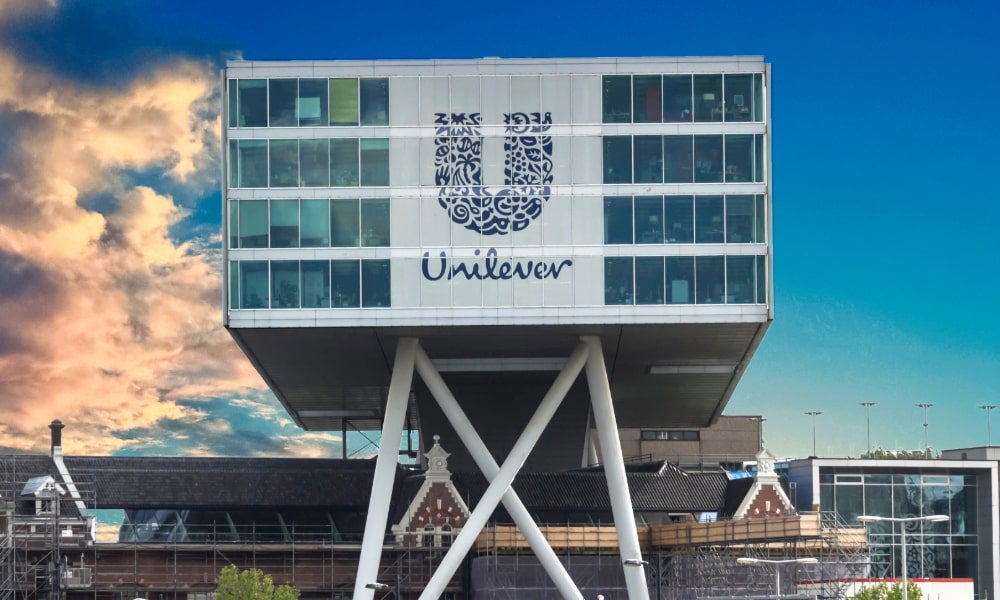When it comes to working capital, don’t dig yourself into a hole
Companies responding to the shock of higher borrowing costs must beware of three common misconceptions, write IMD's Salvatore Cantale and Marc Woodfield
This article is republished with permission from I by IMD, the knowledge platform of IMD Business School. You may access the original article here.
As geopolitical and macroeconomic conditions remain challenging, inflation-induced interest rate hikes around the globe have increased the sensitivity of stock prices to borrowing costs, increasing the cost of capital. And as soon as companies realised the likely economic repercussions of such increases, they began implementing new working capital initiatives with the clear objective of squeezing as much money out of their value chain as possible.
If you are still asking yourself why working capital is an obsession, remember that the money bound in companies’ operations and value chains can represent huge sums. Take the case of Caterpillar, the world’s largest construction equipment manufacturer and a Fortune 100 company in the US. With some $18.5 billion invested in working capital at the end of 2022 and a cost of capital equivalent to roughly 8.5 per cent, the annual cost of the money invested in its working capital totals about $1.5 billion. Considering that it takes Caterpillar roughly 110 days to convert its working capital into cashed-in revenues, its working capital costs about $14 million a day. This is a serious issue for big businesses and it’s easy to understand how it is often a matter of survival for SMEs. So it is no surprise that one of the immediate reactions to an exogenous shock such as the one we are experiencing is to free up (at least some of) the cash bound in companies’ working capital by decisively squeezing customers and suppliers alike.

Before jumping on that bandwagon, however, make sure you do not get trapped by the following three fallacies.
This can be a zero-sum game
In 2023, according to research sources such as PwC’s global Working Capital Study, the amount of working capital has been estimated at $1.3 trillion. In the current situation, this is not just your game but a game that involves everyone. Put differently, even if you are already tapping into your customers’ outstanding balances more quickly, minimising inventories, or letting your supplier wait even longer, do not fool yourself that this will solve all your problems. What initially seems like an advantageous reclaim of your money from (possibly late paying) customers will soon be matched by your own suppliers acting in a similar way to claim (some of) your outstanding bills. Hence, be prepared to accept that this approach may very well turn into a zero-sum game whereby what goes around comes around often with a vengeance, through a poorly orchestrated step that might result in a loss of reputation (and a lower stock price).
Consider, for instance, the apologies from Adidas CEO Kasper Rørsted for the German sports giant’s 2020 decision during the COVID-19 pandemic to delay rent payments for some of its commercial real estate. This decision backfired immediately and intensely. German politicians called the decision “indecent and unacceptable”, and the company was vilified on social media. Consequently, Adidas had little choice but to reverse its decision.
While some of this resentment may be quickly forgotten, the empirical evidence concerning the adverse implications of unethical behaviour on stock prices is well documented, especially when the issue at hand is picked up by the media. Companies must take account of the longer-term negative implications, from lower customer satisfaction, loyalty, retention, and hence overall marketing profitability – possibly straining future top-line capabilities – to the supplementary cost related to any media follow-up, possible litigation, and compensation payments.
Read more: How to drive merger and acquisition success by buying the right intangible assets
Deteriorating working capital is an outcome, not a cause
It indicates the level of alignment of the company’s operations and processes throughout its value chain. Let’s consider these two examples:
The first involves a global leader in industrial engineering, which had a problem with its receivables management, repeatedly reporting more than 110 days’ worth of sales outstanding (DSO). Our in-depth analysis indicated that there was no major issue with deal negotiation and contracting, nor with the methods applied as part of its collectibles management. The real problem was quality, or more specifically, the mismatch between the projected work ordered by the clients and what was effectively delivered by the company.
In fact, a considerable proportion of customers stated they were not entirely satisfied with the products delivered, so they (rightfully) delayed payment until resolution. In less than a year, after a (painful) quality improvement program encompassing the firm’s pre-sales, sales, and engineering disciplines, the relevant root causes for customer dissatisfaction had been successfully addressed. This translated into a reduced DSO of 78 days. Given the size of the company, this improvement of more than 30 days has freed up $3 billion a year in working capital.

Our second example looks at a global producer of premium sports fashion. Despite an extended period of revenue growth, thanks to its wide range of iconic products, it still suffered from constantly rising inventory levels and repeated stockouts of core items, while other items sometimes remained unsold (until significantly marked down).
Our analysis showed that the problem was not the large number of stock-keeping units (SKUs) or their selling price. The issue was rather an inability to accurately anticipate customer demand across geographies and channels, paired with the absence of real-time insights into the location of each SKU within an inefficiently designed multi-geography and multi-site inventory setup. So the focus was shifted to implementing a fully integrated inventory and enterprise order management system with predictive analytics capabilities, streamlining the global warehouse and distribution centre network, and empowering retail outlets to drive re-stocking decisions.
Within a year, stockouts halved, leading to 20 per cent higher sales revenues (despite the streamlined outlet network). In parallel, inventory stock was lowered by more than 10 per cent, freeing up more than $200m a year in cash. In addition, the annual employee satisfaction survey revealed that store managers and staff were considerably more motivated, as they felt enabled to satisfy customer needs while “improving the business” (instead of solely improving working capital).
Read more: Is there an evergreen organisational structure? Lessons from Unilever
Takeaway: What tends to be flagged as a “working capital” issue far more often turns out to be a problem of coordination and alignment along the end-to-end value chain. Make sure you understand the interplay between the different parts and drill down to the root causes of your problem, instead of firefighting the consequences.
Working capital as value driver
Finally, executives should consider not only the short-term aspects of capturing value but also how to create and harvest longer-term value for the business. For example, Unilever announced in March 2020, at the beginning of the COVID-19 pandemic, that it would provide “€500m of cash flow relief to support livelihoods across its extended value chain”, including provisions for “early payment for our most vulnerable small and medium-sized suppliers” and the extended credit “to selected small-scale retail customers, whose business relies on Unilever, to help them manage and protect jobs”. With SMEs on average possessing just 27 days’ worth of cash buffers (and some sectors, such as restaurants, having as little as 16 days), this initiative has been a lifeline for many partners along Unilever’s value chain. Beyond that, it fostered the intangible benefits of “goodwill”, both inside and outside Unilever.

The commercial value of such an initiative cannot be overstated, which is why large companies such as Facebook and Google followed suit. Others, including Chinese manufacturer BYD, French luxury conglomerate LVMH, and several auto companies, temporarily strayed from their core activities by leveraging their production and distribution capabilities to address global shortages in desperately needed goods such as masks, disinfectants, and respirators.
You might think this form of exceptional “generosity” is reserved for dominant market players with excellent working capital positions, but you would be wrong. Take the case of Teladoc Health, a US-based e-health company. In order to respond to the sharp rise in demand for doctoral e-guidance in the wake of the pandemic, it not only recruited more teleworking doctors (the core business) but also offered them above-average compensation levels and payment terms.
Fundamentally different from the often shortsightedly applied approaches to working capital management, all these companies share a key factor in common: they understood the differential advantage of building lasting relations with all their value chain partners, from which they can later harvest benefits.
Takeaway: A good working capital policy does not necessarily seek to minimise the level of capital employed at all costs, especially when this leads to detrimental effects for customers, suppliers, employees, and/or other critical stakeholders. A good working capital policy seeks to optimise relationships and the value of an ecosystem.
Subscribe to BusinessThink for the latest research, analysis and insights from UNSW Business School
In times of crisis and stress, it is a natural reflex to slam on the brakes and manage working capital more decisively. And decisive leadership is indeed crucial at such times. But what might, in the heat of the moment, seem like a “no-brainer” decision can frequently turn out instead to be just another form of “barking up the wrong tree”.
Instead of overwhelming your colleagues with difficult-to-execute working capital initiatives, make sure that you seek to better align the business internally and externally, reconsider your partnership model within your ecosystem, and more effectively leverage the available resources and capabilities across the company’s network to build more durable and resilient value chains.
In short, be decisive about building bridges for your business that will last long after the cost of borrowing crisis has passed.
Salvatore Cantale is Professor of Finance at IMD. He specialises in strategy, business models, and financial results as well as ESG and finance. Marc Woodfield is an external researcher at IMD, with a primary focus on value creation and capture in the intersections of strategy, distribution, operations, and finance.
